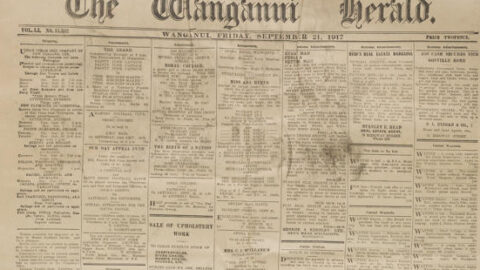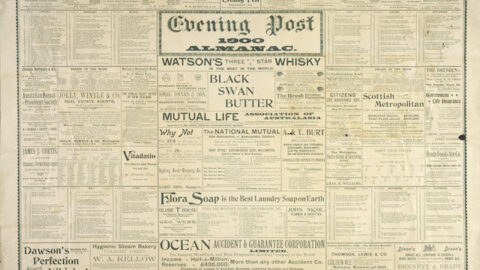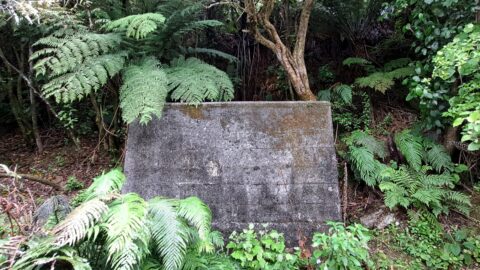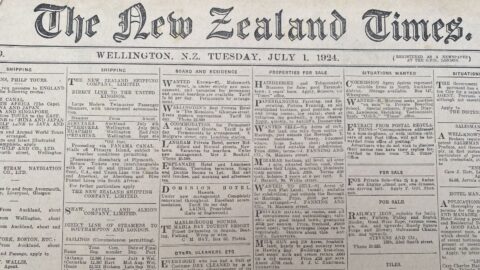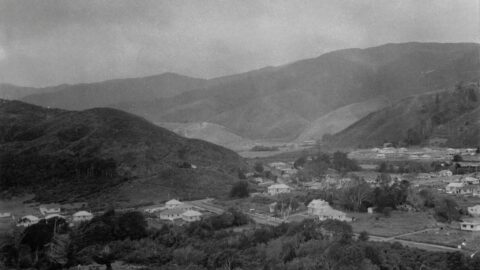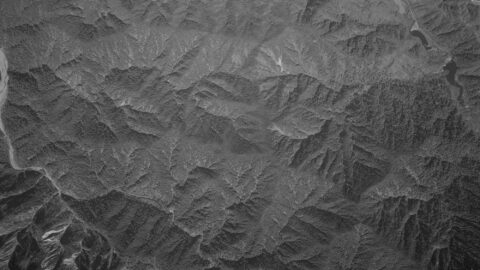FUTURE WATER SUPPLIES
FOR THE CITY AND SUBURBS
DETAILS OF ENGINEER’S REPORT
HUTT RIVER SCHEME FIRST
The report of the City Engineer, Mr. G. A. Hart, as engineer to the City and Suburban Water Board, dealing with future services of water supply, was before that board in detail to-day. The general recommendations have already been published, and may be very briefly summarised as follows:
The Pakuratahi and main Akatarawa sources are ruled out, as are also extensions of the Wainui and Orongorongo systems. The Hutt River scheme, to supply initially ten million gallons per day, at an estimated cost of £566,000, is recommended as the first development, to be followed by the utilisation of water from the Whakatikei stream, and later from the Little Akatarawa, which schemes are estimated to cost £410,000 and £660,000.
There will be no impounding dam in the Hutt River scheme, but large dams, of considerable weight, will be required for the Whakatikei and Little Akatarawa developments, both of which will give a supply of ten million gallons daily. Water may be available from the Hutt scheme in 1934, and it is estimated by the engineer that this first development will meet all the requirements of the board’s area for fifteen, and possibly twenty years.
The report is of too great length to be printed in full, but in the following abridgement an endeavour has been made to set out all the main points:
WATER BOARD REPORT
In the preliminary remarks the engineer states that the sources of supply investigated were (a) the catchment areas of the Wainui-o-mata, Orongorongo, and Karori Streams of the city supply, and (b) the catchment areas of the Whakatikei, Little Akatarawa, and main Hutt Rivers, controlled by the City and Suburban Water Board.
The main Akatarawa and Pakuratahi Streams were not considered on account of the developments which have already taken place within their catchment areas.
The report has involved a comprehensive investigation embracing exploration of streams, trial surveys of the proposed main conduit routes, examination of prospective dam and weir sites, surveys of prospective impounding reservoirs, gauging of streams, and collection of rainfall data, and computation of the requirements of each of the local authorities.
Basing his figures upon a supply of 80 gallons per head per day to the people within the board’s area, the engineer computes that the consumption of water per day over the whole of the board’s area dating from 1934 will be:
These figures are regarded as providing a safe indication of the actual requirements for the first twenty years. The longer forecasts are necessarily less reliable, whilst the ultimate figures can be regarded as an approximation only.
SUPPLY IN 1934
The earliest date by which it is considered that a supply of water can be made available to the whole of the areas embraced by the board is the end of the year 1934. Certain areas may possibly be connected up by 1953.
In arriving at this computation it has been assumed that it will be practicable to commence actual construction before the end of the year 1930 and that a period of four years will be required to complete.
Contemporary with the development by the board it is assumed that each local authority to be served will provide itself during that period with the necessary reservoirs, supply pipes, and reticulation required to make use of the water which will be available from the board at the date mentioned above.
THE CITY SYSTEM
The Wainui-o-mata watershed has been developed since 1884. There are continuous rainfall records since the year 1890. These records establish the fact that there are periods of 100 days and over during which the rainfall is so small as to have no appreciable effect on the flow of the stream.
In the summer of 1917 there occurred a very dry period of 134 days’ duration, and at the end of this period the Morton Reservoir was completely empty. At the end of this period the stream flow diminished to 2 million gallons per day, and over the period during which storage was drawn upon, the stream contributed an average volume of 3.46 million gallons per day. The draw-off from reservoir storage continued for 70 days, during which the average daily volume contributed by storage amounted to 1.44 million gallons per day.
The Orongorongo watershed has been developed since 1924. Daily rainfall readings have been taken since that date, and continuous flow records have been taken. The lowest measured rate of flow recorded was 3.6 million gallons per day (1928), when the whole of this stream passed through the pipeline.
From a comparison of this stream with Wainui, it has been definitely ascertained that the flow from Orongorongo was less than that from Wainui for the corresponding period, so that safe minimum computed stream flow from Orongorongo for the same dry period of 1917 cannot be assumed to have been more than 1.75 million gallons per day.
The dry period of 1928 followed after a succession of years of excessive rainfall, whereas the drought period of 1917 followed after the three driest successive years which have ever been recorded at Wainui.
The Karori catchment area is only 628 acres in area, and the rainfall is relatively low. The stream flow during periods of drought would be practically negligible. Further, the quality of the water is not satisfactory. A chlorinating plant is being installed as a safeguard in order that the supply from this source may be available for a few years longer, but it is considered that the storage should be used in conjunction with the supply from Orongorongo only.
The total water storage capacity of the city supply system available for the impounding of water from the streams amounts to a nominal total of 238 million gallons. Siltation and other losses will have reduced the capacity to a net total of 202 million by the year 1934. At that date there will be a net storage capacity at Wainui and Karori equal to 20 full days’ water consumption.
DROUGHT CONDITIONS
The 1917 drought, though severe, cannot be regarded as the most acute likely. In that year, over a period of 73 continuous days, the stream flow fell below the water consumption daily requirements. Assuming that a similar condition of drought should recur at the end of 1934, and that a daily draft of 9.36 million gallons would require to be met, our present storage reservoirs would be exhausted after being drawn upon for 67 days.
That is to say, after that time, the only available supply for the city until the drought broke would be the supply from the streams of about 3.75 million gallons per day. This demonstrates the fact that in 1934 and before, should such a recurrence of dryness take place, the city water supply would not be in a position to maintain the demand upon its resources to the extent it was able in the year 1917, when it was in a position to maintain the city’s draft for a period of 100 days.
The position is that the increase in consumption has overtaken and passed the estimated dry weather flow of the Orongorongo Stream, and this stream is the only extra source of supply added since 1917.
After referring to a statement in a report by the late City Engineer that a water supply system should have a safety margin of at least 120 days to meet drought conditions, with which Mr. Hart agrees, he continues:
In the year 1934, it is computed that the total water demand of the city of Wellington will amount to 9.36 million gallons per day. It would not be expedient to assume that the stream flow at Wainui and Orongorongo could, with the existing storage, supply a daily drawoff in excess of seven million gallons per day over any dry period likely to occur. A further daily value of not less than 2.36 million gallons per day will require to be provided for by the year 1934 to meet the city of Wellington requirements.
SUBURBAN REQUIREMENTS
In reviewing the position of the suburban localities for future water supply to be drawn from the sources controlled by the board, it has been necessary for me to assume that these areas will exercise the rights which are conferred upon them by the Act to make use of the water supplies of the board when developed to meet the whole of their requirements.
Accurate information in regard to the suitability and extent of the existing sources of supply is not available to me. It is, however, understood that it is the intention to dispense with the existing sources of supply when the board is in a position to provide water.
It has been assumed that the supplies would be delivered in bulk to each contributory authority at some convenient point at the boundary of each.
The following table is an approximate estimate of the population of the suburban area in the year 1934:—
The total additional daily water consumption of the city of Wellington and suburban areas to be provided from other than sources existing in 1929, in development stages of ten years from 1934 is as follows:
1934, 5.80 million gallons per day; 1944, 9.56; 1954, 14.04; 1964, 19.24; 1974, 24.60; ultimate, 33.00.
The estimated demand in 1934 amounts to practically an additional six million gallons per day and by 1944 to almost ten million gallons per day. An initial scheme based upon the requirements of fifteen years from the present date would, therefore, be a reasonable provision to make. Economy of pipeline construction definitely renders any smaller development unsound.
THE SCHEMES COMPARED
Mr. Hart then makes a detailed comparison of the several possible developments. Dealing with the proposal that a third dam should be built in the Wainui Valley, he states that the site chosen by the late Mr. Morton in 1919 for further investigation is regarded as the most suitable in the watershed.
It has been ascertained, however, that the site possesses great disadvantages, viz.:
(a) The lowest draw-off of the proposed dam would be about 70ft below the lowest draw-off of the existing reservoir;
(b) the storage capacity afforded by the dam is relatively expensive;
(c) in 1919 the dam was estimated to cost £132,000. This estimate was, however, made before there had been any opportunity of exploring the foundations. A revised estimate accordingly amounts to from £350,000 to £400,000.
This dam, in conjunction with the existing storage there, would maintain an average draft of 10.6 million gallons per day. This amount can be increased to a small extent—½ million gallons per day—by an additional pipeline laid from the Orongorongo intake. Its usefulness would be limited to the times when the supply in the Orongorongo was in excess of the volume required to be taken through the Orongorongo main to the city.
The maximum safe yield which the Wainui system can supply over any period of excessive dryness is estimated at 3.6 million gallons per day. A further outlay in mains to the city and suburban areas would increase the outlay to the sum of £589,000.
The further development of the Wainui watershed cannot therefore be regarded as economical, viewed from either the standpoint of the Board or of the City of Wellington’s requirements.
It should be noted, in addition, that the mains would not run through the area of the Board’s district which is most liable to future expansion, and that the further and elevated areas of the Board’s district cannot be served from this source of supply. In view of the advantages which other sources of supply possess, the further development of the Wainui Stream, either for the use of the Board or for the requirements of the city, is not recommended.
ORONGORONGO SCHEME
Further development of the Orongorongo scheme is advised against. The difficulty in contending with flood travel of the shingle constitutes a most serious objection to development by reservoirs of this stream.
For 15 per cent of the time, the water has been unfit for consumption, a grave disability. The flow has reached a minimum of 3.6 million gallons per day, slightly less than two-thirds of the capacity of the pipeline. The minimum flow which can be relied upon is not estimated to exceed 1.75 million gallons per day. In 1928, a flood rate of flow was recorded of 1300 million gallons per day. Any heavy flood is sufficient to seriously impair the holding capacity of any reservoir which might be constructed.
After further discussion of suggestions whereby the Orongorongo Stream might be developed, the report advises that the new supply for the city should maintain with the Wainui system the low-level zone draft by delivering at least into Bell Road Reservoir, or into a further reservoir which would command the eastern suburbs, or into both, and the Orongorongo should be relieved of maintaining the low-level pressures to supply the higher levels.
This it should be capable of doing even when the higher levels reach their ultimate populations. It may be necessary to provide additional storage at Karori. Any further development of the Orongorongo will be of a minor nature, and the concern of the city and not the Water Board.
THE WHAKATIKEI WATERSHED
The proposed point of development in the Whakatikei, the report states, is twenty miles from the city boundary. At that point, a dam of 135 feet at its highest point (foundation to crest) can be economically constructed. The length of the crest would be 250 feet. The reservoir would impound about 1650 million gallons of water at an estimated outlay of about £105,000. The supply would be 10 to 12 million gallons per day.
The Whakatikei dam would cost about one-third of the amount of that of a proposed Wainui dam, and would impound twice as much water. A proposal that a dam of greater height should be constructed lower in the valley is definitely advised against.
LITTLE AKATARAWA
The proposed point of development in the Little Akatarawa is twenty-four miles from the city boundary. There the stream opens out in a wide valley very similar to the Whakatikei Valley. The capacity of a reservoir on this site is almost equal to that which the Whakatikei affords.
Below the Snow Hill Road, a site has been chosen for the erection of a dam. The height would be about 135 feet; its length would be about 300 feet, and it would provide a reservoir of a capacity of 1600 million gallons, double the capacity of a new reservoir at Wainui. The estimated cost of this dam would be about £133,000, about one-third of the cost of a dam at Wainui.
The proposed lowest draw-off level of the dam would be 270 feet higher than the stream bed at the dam site in the Whakatikei Valley. The main conduits would be taken by a tunnel sixty chains in length into the adjoining Whakatikei Valley. This scheme would provide a draft of ten million gallons per day. The estimated cost of the complete scheme to Koro Koro amounts to £660,000.
As a scheme for initial development, the Akatarawa scheme is not recommended, on account of its relatively high cost. This scheme would be better held in reserve for later development.
The predominant feature in the Akatarawa scheme is the advantage it possesses whereby a portion of the flow can be diverted into a reservoir constructed in the Whakatikei Valley, to supply the low-level areas of the Board’s district if required, or alternatively an independent pipeline can be taken to serve high-level districts; or the stream flow can be used in both these ways to meet any form of development the Board’s areas might assume.
HUTT RIVER WATERSHED
After a consideration of stream flow and rainfall in the Hutt River watershed, of 33.7 square miles, the engineer states that from the information gathered he is quite satisfied that the stream can be relied upon to supply a draft of ten million gallons per day without the necessity of dam construction. The stream is admirably adapted for development by means of a weir intake.
The limit of economic development by means of a weir intake would be about ten million gallons per day and the minimum flow of this amount is regarded as well within a conservative estimate. A site for the intake has been located about twenty chains upstream from its junction with the Pakuratahi, and about twenty-six miles from the city boundary. There are three practicable routes for the mains. The estimated cost of this development, to give ten million gallons per day, is £566,000 complete to Koro Koro.
Estimated Population and Daily Water Consumption
| Year | Population | Daily Water Consumption (Gallons) |
|---|---|---|
| 1934 | 160,000 | 12,800,000 |
| 1944 | 207,000 | 16,560,000 |
| 1954 | 263,000 | 21,040,000 |
| 1964 | 330,000 | 26,400,000 |
| 1974 | 400,000 | 32,000,000 |
| Ultimate | 500,000 | 40,000,000 |
Estimated 1934 Suburban Populations and Daily Consumption
- Upper Hutt Borough: 3,800 — 304,000 gallons
- Lower Hutt Borough: 17,800 — 1,424,000 gallons
- Petone Borough: 11,800 — 944,000 gallons
- Part of Hutt County: 7,000 — 560,000 gallons
- Eastbourne Borough: 2,600 — 208,000 gallons
- Total in 1934: 43,000 — 3,110,000 gallons

